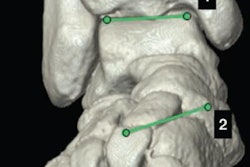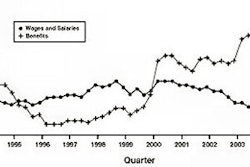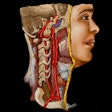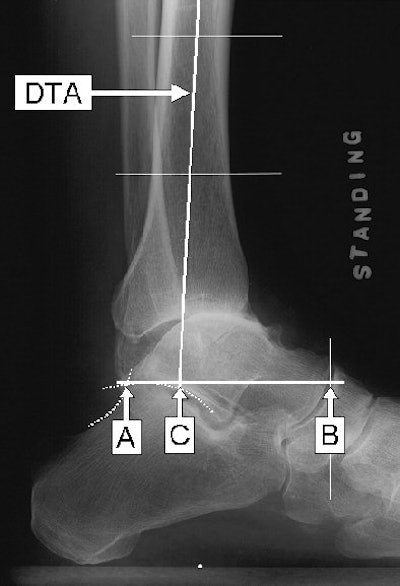
Chronic conditions such as osteoarthritis make it more important to assess the anteroposterior alignment of the ankle, yet more difficult to obtain the needed radiographs. To overcome the inherent challenges, a new study recommends looking at the tibial-talar (TT) ratio.
The ratio reflects the point at which the midlongitudinal axis of the tibial shaft bisects the longitudinal talar length. It emerged as the most reproducible of various ankle alignment measures tested by researchers from the Orthopaedic Biomechanics Laboratory at the University of Iowa in Iowa City.
"This new measure can be determined without relying on ankle surface landmarks, thus can be applied to ankles with severe articular degeneration or after total ankle replacement," explained Dr. Yuki Tochigi, a visiting assistant professor at the lab and lead author of the study.
"Our results suggest that the TT ratio value in a patient is nearly consistent regardless of the ankle position on a radiograph (both internal/external rotation and dorsi/plantar flexion within +/- 10 degrees), as well as regardless of the magnification of radiograph (because it is a ratio based on the patient-specific A/P talar length)," Tochigi wrote in an e-mail to AuntMinnie.com.
Dr. Tochigi originally presented his group's findings in February at the annual meeting of the American Academy of Orthopaedic Surgeons (AAOS) in Washington, DC. Publication of the results is now in process, he said.
The authors calculate the TT ratio as a percentage equal to AC divided by AB times 100 (TT ratio = AC / AB x 100). In one typical example given at the AAOS, the TTR calculated out as 55.3%.
Point A is the posterior talar point, or the intersection between the contours of the posterior subtalar articular surface and the posterosuperior calcaneal cortex. Point B is the anterior talar point, or the vertical projection of the most anterior aspect of the talus onto the talar reference line.
The talar reference line is a line through point A parallel to the floor. The longitudinal talar length is AB. The distal tibial axis is the longitudinal midbisecting line of the tibial shaft determined at 5 cm and 10 cm above the ankle, and its intersection with the talar reference line is point C.
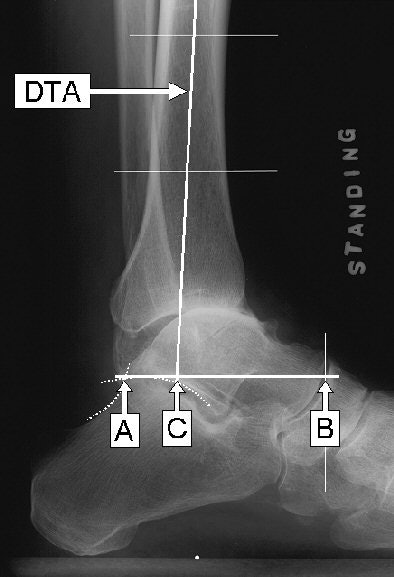 |
| TT ratio = AC / AB x 100. The superimposed letters on this radiograph show the locations for measurements to calculate the tibial-talar ratio of anteroposterior ankle alignment. Image courtesy of Dr. Yuki Tochigi. |
When positioning an ankle for standing radiographs, skin surface landmarks such as malleoli, calcaneal tubercle, or metatarsal heads are usually utilized, Tochigi noted.
"However, reproducibly positioning the ankle with such method is quite difficult; it may easily cause 10 degrees of difference in internal/external rotation (even under fluoroscopy assistance, 5 degrees of difference is difficult to identify)," he wrote.
"Moreover, some patients with osteoarthritis cannot stand with the neutral dorsi/plantar flexion position," Tochigi continued.
For their investigation, Tochigi's team conducted a two-part study. In the first study they examined 10 cadaver ankles with end-stage osteoarthritis or total ankle replacement (TAR). Lateral radiographs were taken with the ankle in nine positions in the transverse plane and seven positions in the sagittal plane, they reported.
In the second part of their study, researchers applied the three possible candidate measures to clinical radiographs in 33 nonarthritic and 35 arthritic ankles. They found that the TT ratio reflected the lowest sensitivity to positional changes in either plane and was highly reproducible.
The Iowa group wanted a consistent measure of ankle alignment to facilitate other ongoing research. The ratio will be used in clinical studies assessing the effect of ankle alignment on acceleration of osteoarthritic degeneration and clinical outcome after TAR.
"It is generally believed that malalignment of natural ankles causes contact stress aberration possibly leading to articular degeneration, and that malpositioning of ankle implant causes earlier failure," Tochigi noted.
"If the clinical significance of A/P ankle alignment could be established," Tochigi wrote, "the TT ratio would be helpful for predicting the prognosis of ankle OA (osteoarthritis) or for confirming if a TAR implant is appropriately positioned."
By Jerry Ingram
AuntMinnie.com contributing writer
May 6, 2005
Related Reading
Total ankle arthroplasty yields mixed results, July 19, 2004
Strengthening exercises relieve Achilles pain, March 19, 2004
MRI, US make sense of disorganized scar tissue in PTTL injuries, October 29, 2003
Copyright © 2005 AuntMinnie.com





